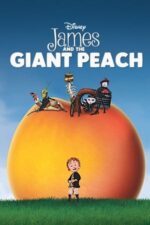When Animals Talk (and Do More): Exploring Anthropomorphism in Film
Hey everyone! So, I was thinking about something recently – how often we see animals acting like humans in movies, and it got me pondering just how filmmakers use that technique. We’re talking about anthropomorphism, the attribution of human traits, emotions, or intentions to non-human entities. It's a powerful tool, capable of eliciting laughs, tears, and even profound social commentary.
Think about it: we’ve been doing this for ages. Aesop’s Fables are practically built on the concept! But in film, anthropomorphism takes on a whole new dimension. It allows us to explore complex themes through characters who aren't bound by human limitations – or sometimes, because they’re freed from them.
Take Wallace & Gromit: Vengeance Most Fowl, for example. The sheer delight of watching a cheese-loving inventor and his clever dog navigate a bizarre situation with garden gnomes is instantly charming. But beyond the laughs, there's something poignant about their relationship – a bond built on mutual respect and understanding that transcends species. It’s a commentary on friendship itself, cleverly disguised as a whimsical adventure.
Then you have films like The Bad Guys 2. The premise of reformed villains who are still struggling with their inherent nature is inherently relatable, but the fact they're animals – wolves, snakes, sharks – adds another layer of intrigue. It allows for some genuinely funny moments (a shark trying to be polite? Comedy gold!), but also lets the film explore themes of redemption and societal prejudice in a fresh way. It’s like holding up a mirror to ourselves, asking: can we truly change who we are?
And let's not forget the wild ride that is Cat Shit One. Okay, so it's definitely… unique! But using rabbit soldiers to satirize modern warfare and private military contracting is a brilliant (and darkly humorous) way to critique a complex issue. The absurdity of fluffy bunnies wielding advanced weaponry forces us to confront the uncomfortable realities of conflict in a new light.
Even something seemingly straightforward like Blinky Bill the Movie uses anthropomorphism to explore universal themes of family, courage, and self-discovery. It’s a comforting reminder that even when we feel lost or alone, there's always adventure waiting just beyond our comfort zone.
The film The Nine Lives of Fritz the Cat, however, takes a more introspective approach. It uses anthropomorphism to delve into existential anxieties – regret, identity, and the search for meaning. Seeing Fritz’s alternate lives play out is like watching a man desperately trying on different versions of himself, hoping one will fit just right.
Anthropomorphism isn't always about lighthearted fun; it can be a powerful tool for social commentary or profound introspection. It allows filmmakers to bypass our defenses and explore uncomfortable truths in a way that’s both engaging and thought-provoking. So next time you see an animal acting like a human on screen, take a moment to consider why – what is the filmmaker trying to say? You might be surprised by what you discover!






































